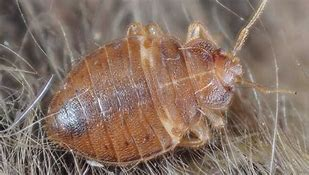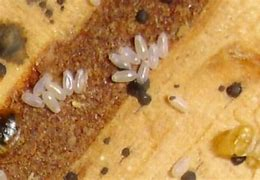Bed Bugs – Frequently Asked Questions
Can you Provide Background Information on Bed Bugs?
Historically, the common bed bug has been a pest by feeding on human blood, causing itchy bites, irritations, and mental anxiety. While they have not been proven to transmit disease, they are an important public health pest and nuisance. Recent evidence, however, indicates that bed bugs do emit histamine, an asthmatic trigger that ‘could’ have significant health consequences.

Further, they do alter the bacterial environment surrounding them that may add to asthmatic symptom worsening. Confounding the situation is that not everyone reacts to bed bug bites…about 30% of the public do not demonstrate welts or markings. The elderly, newborns and those with compromised immune systems are candidates for not reacting to bites but are all subject to secondary skin infections when scratching. Bed bugs are notorious hitchhikers and are often introduced into your home on your clothing, luggage, furniture (especially antiques and second-hand items), backpacks, shoes, and more.
Finding bed bugs, especially when their numbers are few is not an easy task, and often best left to your pest management team here at Millette Pest Control to detect low level infestations.
Although adults are visible to the naked eye, they typically hide away in small, dark cracks and crevices and are nocturnal; coming out at night for a blood meal when a host (you) is available.
What do Bed Bugs Look Like?
Simply stated:
- Adult bed bugs are about the size of an apple seed (3/16 – 1/4 inch long)
- Their body shape is classically long and brown, with a flat, oval-shaped (if not fed recently); balloon-like, reddish-brown, and more elongated (if fed recently).
- Physical characteristics include a beak with three segments; antenna that have four parts; wings that are not used for flying; and short, golden-colored hairs.
- May exude a smelly, “musty-sweetish” odor produced through glands on the lower side of the body.
- Young bed bugs (also called nymphs) are smaller, translucent, or whitish yellow in color; and if not recently fed, can be nearly invisible to the naked eye because of coloring and size.
- Bed bug eggs are tiny, the size of a pinhead; pearl-white in color; and marked by an eye spot if more than five days old.
What Are the Major Signs of a Bed Bug Infestation?
One way to determine whether you have bed bugs is to first look for the physical signs of the bed bugs or their remnants in your bedding. Use a strong flashlight to examine the bedding. First focus on the two corners at the head of the bed. Pull back the blanket, sheet, fitted sheet, and mattress pad (if any) looking for signs of bed bugs between each of the items of bedding. Examine the rolled edges of the mattress, tufts, seams and any labels or stickers. Lift the mattress off the box spring (if there is one) at the front corners looking for sign of bed bugs. Otherwise, if the mattress rests on a frame, look at the joints and seams of the frame carefully. Examine the inner edges of the bed skirt, especially at the head of the bed.
There are five (5) major signs you should be aware of:
- Live bed bugs themselves
- Dark spots 1/16th to 1/8th of an inch in diameter. Some spots appear dark, and others look faded as though a magic marker had made the spot and the ink bled a little. Other signs of bed bugs may accompany these fecal spots, or they may occur by themselves and looks like small specs of black pepper
- Cast skins (molting) that the nymphs shed as they grow through their 5 juvenile stages
- Red spots (blood droplets) or reddish strains from crushed bed bugs
- Tiny, 1/32nd of an inch long (1 mm) white elongated eggs or eggshells, which are glued to a surface

Are there Any Other Signs of Bed Bugs?
- People may report bites, but they are a poor indicator because many do not respond to bed bug bites and there are many causes for “bites”. A healthcare practitioner cannot definitively diagnose a bite/welt as being the result of a bed bug.
- If the infestation is widespread, a sickly-sweet odor may be noted.
- Signs of bed bugs will also be noted beyond the bed and bedding (e.g., upholstered furniture, draperies, baseboard molding, etc.) if the infestation is large. The rule of thumb is that 85% of bed bugs generally reside within a 5-foot radius from the bed.
When to Call-In the Pros?
You believe you are being bit and have inspected your bedroom thoroughly. You can’t find anything but are still worried every evening you retire. Let us take a closer look at some:
- Visual Inspections – You may have done your own inspection but are not trained and likely not as thorough as Millette Pest Control will be. This is a time-intensive process and the lesser the problem, the more difficult to uncover a problem, if it exists. The most common method for monitoring bed bugs uses a flashlight, magnifying glass and sometimes more advanced tools like a UV light to detect residual blood staining from crushed bed bugs.
- Canine Detection – Many pest professionals and independent bed bug detection companies use dogs trained to detect the scent of bed bugs. Studies have proven that they are quite effective, reportedly close to 90% effective as compared to 30% for human visual inspections. They are, however, a much larger expense than many of the other inspection tools available. Bed bug sniffing dogs may be an unrealistic option for a single-family homeowner due to cost but can be a reliant tool for low level infestations or when screening larger areas.
- Heat vs. Chemical – If bed bugs presence have been confirmed by your PMP in your home, they may offer you a choice of heat vs. chemical treatment. Heat is typically a one-time treatment, is relatively expensive, and requires little preparation by the resident. Chemical (or conventional as often referenced) requires multiple treatments, is far less expensive than heat, but does require significant preparation prior to treatment. While the choice is yours, limited (few) bed bugs can be effectively treated chemically whereas more wide-spread infestation could require heat as the preferred method of treatment.
- Bed Bug Interceptors – Used often to monitor activity; these devices alone are not preventive. These traps work when bed bugs enter and fall inside of the trap and are unable to escape. Detecting a bed bug upon inspection of the interceptor will alert you to a potential problem. There are a variety of interceptors on the market today for use. When using a passive monitor (one without an attractant bed bug ‘lure’), placement is critically important to its effectiveness. Downsides include that some households may not want a trap under their bed legs or in an area that children, pets, or guests may discover.
- Mattress Encasements – protect the bedding from fluids/stains and can assist with making a visual inspection easier. Just as the name suggests, encasements cover the mattress and/or box spring completely. Ideally, this eliminates bedding as a hiding place for bed bugs assuming the encasement stays fully intact. While preventing bed bugs from escaping when placed on an infested mattress, encasements have no effect on new bed bugs that enter the room. Common problems encountered are small rips and tears that result during installation or daily use. Once a rip or tear takes place, encasements are not able to be repaired. Left in place but damaged, bed bugs now have a new and often overlooked harborage site inside of the encasement. As bed bugs can last upwards of 6-9 months or more without a blood meal, the use of encasements as a control method is limited to those few covers that remain intact over constant use.
- Active Mattress Liners – Installed like a fitted sheet on either mattress or box spring, these liners kill bed bugs for two years. This product is treated with an active ingredient that first causes bed bugs to stop feeding and stop laying eggs within minutes of contact. They continue to work if ripped or torn as they do not trap bed bugs inside but kill them though contact. While often overlooked as an inspection tool, active liners will alert you to the presence of bed bugs when dead bed bug(s) turn up on the liner or in its vicinity. In addition, bed bugs that contact the impregnated fabric usually release fecal contents easily detected on the fabric’s light background (e.g., like a black marker smudge).
Bed bugs are often neither simple to find nor treat effectively. While homeowners will sometimes attempt to self-treat, their results are typically unsuccessful and may be very frustrating. Or worse…failed attempts can amplify the problem.
Leave it to Millette Pest Control to inspect and resolve the problem…and of course, offer tips and guides to assist in preventing bringing bed bugs from entering your home in the first instance.
